Recent Articles
Popular Makes
Body Types
2021 Nissan Rogue vs. 2021 Ford Escape
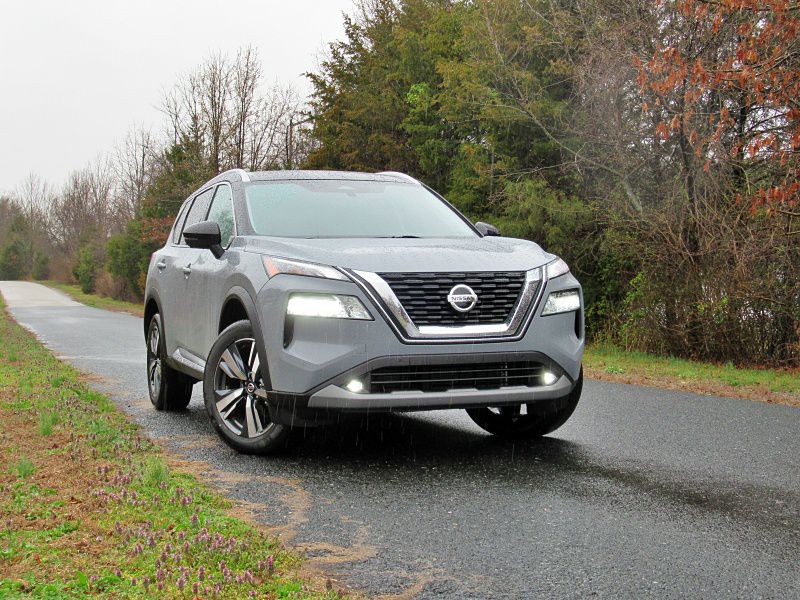
2021 Nissan Rogue SL ・ Photo by Brady Holt
Until a few years ago, mid-size sedans were the bread and butter of most brands. For Nissan, that was the Altima. But now, mid-size sedan sales are dwarfed by a hotter market segment: the compact crossover. And the 2021 Nissan Rogue compact crossover just went through a full redesign.
To see how the Rogue fits into its segment, we’ve compared it against another popular model: the 2021 Ford Escape. (Side note: Ford doesn’t even sell sedans anymore.) Both these small SUVs are comfortable, affordable, easy to drive, and fuel-efficient. Keep reading as we break down which one is the best in each of eight categories, and which is our top pick overall.
Models and Prices
The 2021 Ford Escape is available in a range of four trim levels and four different powertrains. That breadth and a low $24,885 base price help it win this category. Even the base three-cylinder S has ample driver-assistance technology, but most folks will step up to the SE model ($26,610) for an infotainment touchscreen, push-button starting, and alloy wheels. There’s also the three-cylinder SEL with leatherette upholstery ($29,025) and the top-of-the-line Titanium ($33,300). Most trims offer a gas-electric hybrid powertrain for about $1,000 extra, and a powerful four-cylinder is optional on the SEL and standard on the Titanium. A plug-in hybrid is on the way for maximum fuel savings.
Nissan keeps things simpler: just one engine and no stripped-down base model. The base S ($25,650) already includes a long list of safety, aesthetic, and infotainment features, while the next-up SV ($27,340) adds a power driver’s seat, automatic climate control, push-button starting, a six-speaker sound system, and more driver-assist technology. Leatherette is optional on the SV to match the Escape SEL, and true leather is standard on the Rogue SL ($32,000). The top Platinum brings even fancier decor at $35,450).
Ford Escape
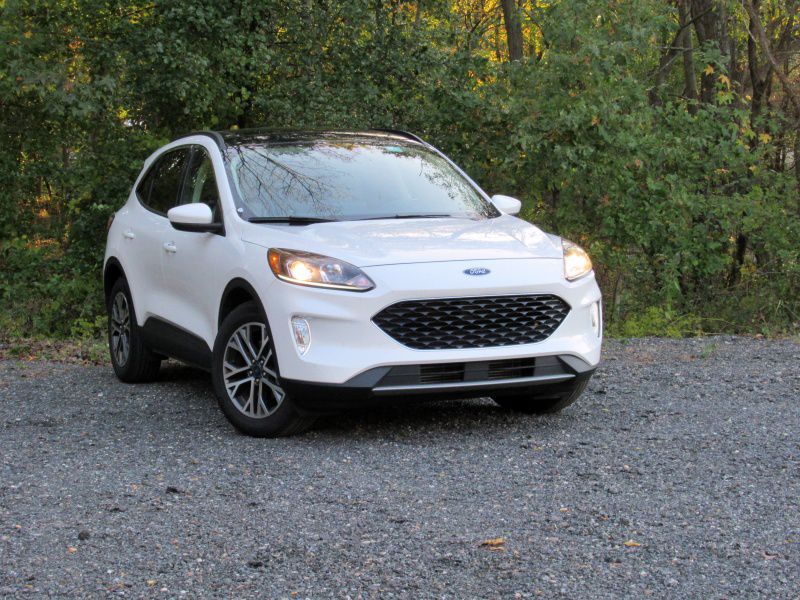
Photo by Brady Holt
Exterior Design
Last redesigned for 2020, the Escape has become perhaps the gentlest-looking vehicle in its class. There are few straight lines on this gently rounded vehicle. It looks small and unintimidating — even less like an SUV than it actually is. If you love SUVs, the Escape might look weak or dull. If you prefer cars but just want some extra utility, this aesthetic might be just what you’re looking for.
The redesigned Rogue sets out to look tougher and more aggressive than the Escape. The front end has a big grille and small, high-mounted headlights, providing a squint that’s at odds with the Ford’s open smile. Around the sides and back, the Rogue is a chunky, purposeful box with straight, purposeful lines and a rugged rear bumper. The Rogue doesn’t come off as an overdone wannabe-tough-guy vehicle, but it’s more SUV-like than the Escape. Since that’s a pro to some buyers and a con to others, we’ll call this category a tie.
Tie
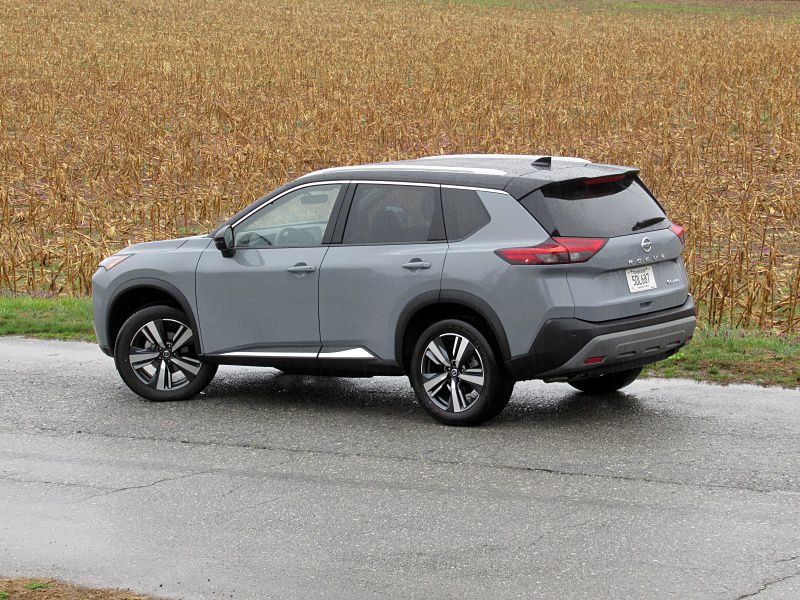
Photo by Brady Holt
Interior Design
When showing off the redesigned Rogue, Nissan highlighted the orange-tan pleated leather seats on its top Platinum trim level. We tested the SL with less eye-popping leather upholstery in a subdued black, but we still came away pretty impressed overall. Moving parts like the turn signal stalk felt uncommonly solid, most materials looked and felt good, and the controls were easy to figure out. An 8-inch touchscreen infotainment system comes standard, and upper trims let you upgrade it to 9 inches.
The Escape’s interior also has a pleasant ambiance, a contemporary appearance, and user-friendly controls. An 8-inch touchscreen is standard on all but the base model, which instead has just a small radio display that also provides a view for the federally mandated backup camera. However, the Ford has more lower-grade plastics around its cabin than the Nissan, so we’ll give this category to the Rogue.
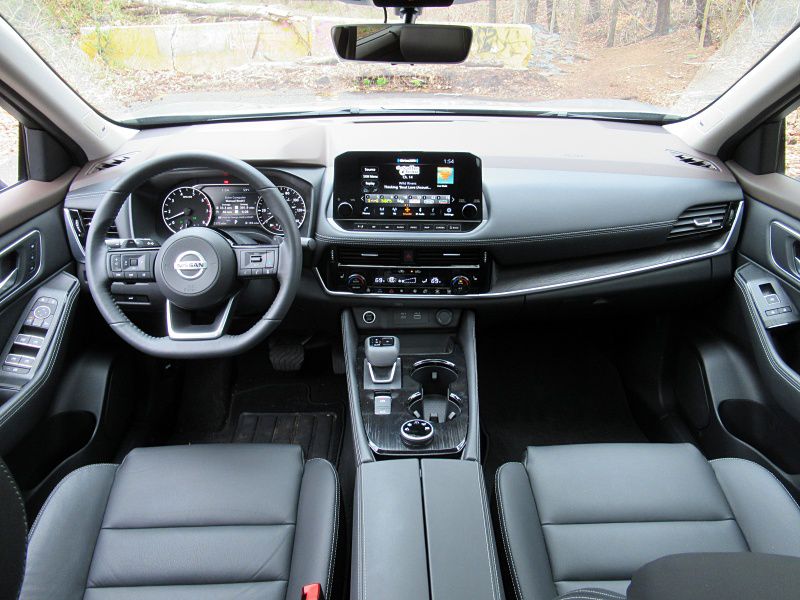
Photo by Brady Holt
Interior Comfort
The Rogue uses Nissan’s oft-celebrated “Zero-Gravity” seats, which are supposed to be optimally shaped and padded for long-term support. While they’re comfortable, we didn’t find them extraordinary on either long or short drives in the Rogue. More impressive is the Rogue’s rear seat space; there’s a high, supportive cushion, plenty of legroom, and space for three adults to fit side by side.
The Escape isn’t quite as roomy. The front seats are narrower, and the rear seat isn’t any more spacious even with the fore-aft adjustment all the way back. The Rogue’s rear doors can also open much wider than the Escape’s for easier access. The Ford is hardly cramped or uncomfortable, but the Nissan is even more impressive.
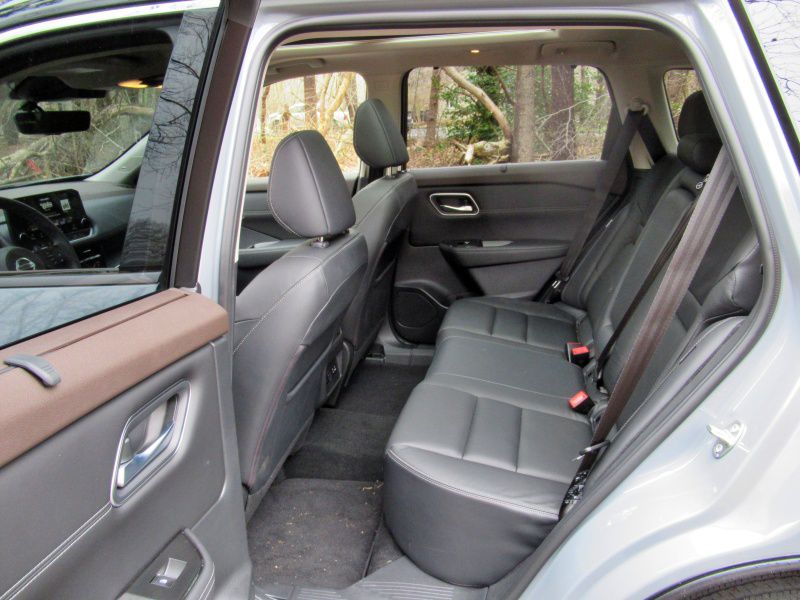
Photo by Brady Holt
Cargo and Towing
The Escape offers up to 37.5 cubic feet of cargo space behind its rear seat, near the top of the compact crossover segment and more than the Rogue’s already-generous 36.5 cubic feet. But there’s a catch: To get that maximum volume, you need to slide the Escape’s rear seat all the way forward, badly cramping rear legroom. With the rear seat in a more hospitable position, volume drops to 33.5 cubic feet. With the rear seat folded, the Rogue manages 74.1 cubic feet versus the Escape’s disappointing 65.4 cubic feet. Upper-trim Rogues also provide a useful adjustable-height cargo floor.
The Escape does offer greatly superior towing capacity. It provides a generous 2,000-pound capacity with its base three-cylinder engine, 1,500 lbs as a hybrid, and an extra-impressive 3,500 lbs with its four-cylinder engine. The Rogue’s towing limits are unusually weak even for a small crossover; though Nissan increased the limit over last year’s Rogue, it’s still a low 1,350 lbs. Still, the Rogue offers more capacity where most owners will use it: inside the cabin.
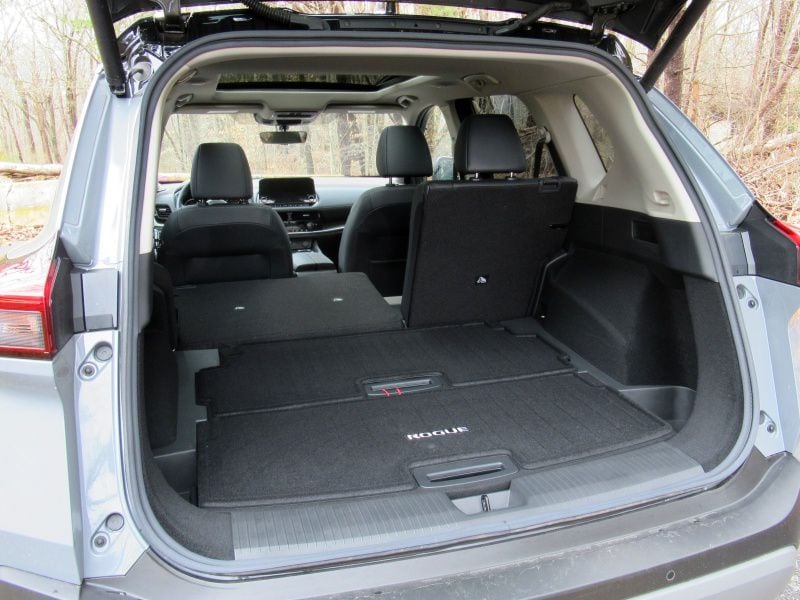
Photo by Brady Holt
Driving Experience
The Escape is notable for its unusual powertrains. Standard is a 181-horsepower turbocharged 1.5-liter three-cylinder engine. That’s a normal output for this class — identical to the Rogue’s rating — but with one fewer cylinder. Fortunately, we found this little engine to be agreeably peppy and to even sound pleasant; while some critics have complained of excess vibration, we only had occasional issues under certain conditions. What’s more, Ford lets you upgrade to one of two extra-efficient hybrids or to a mighty 250-horsepower four-cylinder.
The redesigned Rogue has gotten quicker and quieter than last year’s model, but its 2.5-liter four-cylinder is not as responsive as even the base Escape. And while both SUVs ride and handle pretty well, the Escape provides conveniently light low-speed steering along with higher handling limits than the Rogue. There’s no ride quality penalty, either.
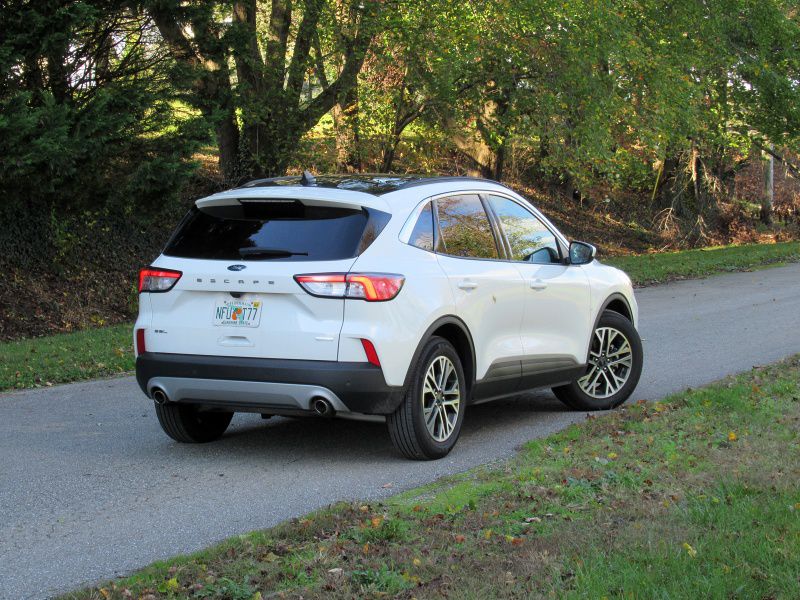
Photo by Brady Holt
Fuel Economy
Since the Escape has such a small engine, there’s no surprise it gets better gas mileage than the Rogue. Still, the Nissan’s 2.5-liter four-cylinder isn’t far behind the Ford’s 1.5-liter three-cylinder. Most Rogue trim levels score 26 mpg in the city, 34 mpg on the highway, and 29 mpg combined with front-wheel drive and 25 mpg city, 32 mpg highway, and 28 mpg combined with all-wheel drive. The front-drive three-cylinder Escape manages 28 mpg city, 34 mpg highway, and 30 mpg combined, with AWD models managing 26 mpg city, 31 mpg highway, and 28 mpg combined.
But the Escape has another trick up its sleeve: the hybrid. It gets 44 mpg city, 37 mpg highway, and 41 mpg combined with front-wheel drive and about 1 mpg less with AWD. If that’s not thrifty enough, Ford is preparing to sell a long-promised plug-in hybrid that can go up to 37 miles using only electricity; after that, it will operate like a regular Escape Hybrid. If you’re interested in maximum power over maximum fuel economy, don’t worry — even the four-cylinder Escape gets a reasonable 23 mpg in the city, 31 mpg on the highway, and 26 mpg combined with AWD standard.
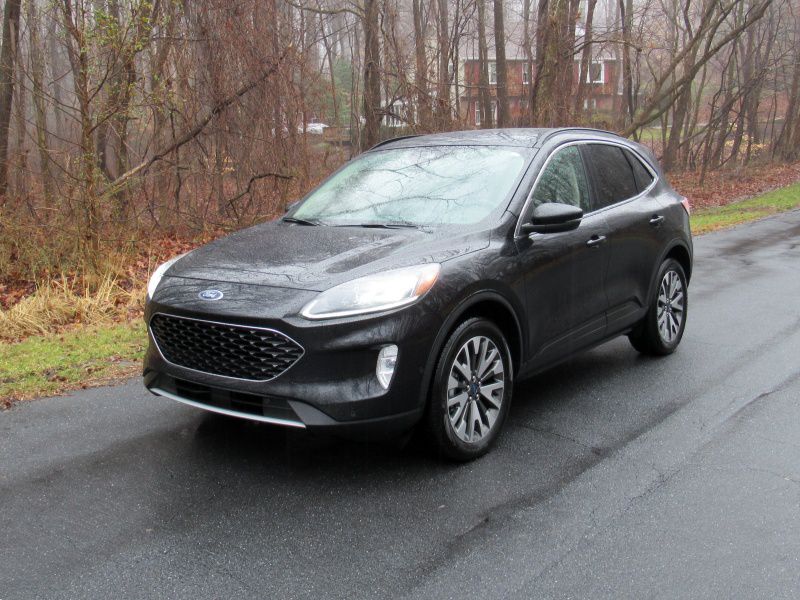
Photo by Brady Holt
Safety
Both the Escape and Rogue perform very well in most crash tests and have long lists of standard safety features. The Rogue earned the highest designation of Top Safety Pick+ from the Insurance Institute for Highway Safety, and its standard safety features include forward and rear automatic emergency braking, blind-spot monitoring with a rear cross-traffic alert, and a lane-departure warning. All but the base model add Nissan’s ProPilot Assist — adaptive cruise control with lane-keep assist — and a surround-view parking camera.
However, the Rogue earned a mediocre three out of five stars in the National Highway Traffic Safety Administration’s frontal-impact crash test, including mere two-star protection for the front passenger. In contrast, the Escape earned five stars in all NHTSA crash tests. (Nissan says it has redesigned the Rogue’s passenger-side seatbelt and airbag, and any vehicles built before the change can get the new parts free of charge; NHTSA hasn’t yet tested the updates to confirm effectiveness.) The Escape earned an IIHS Top Safety Pick designation but fell shy of the Rogue due to worse headlight performance. It’s also missing the Rogue’s rear emergency braking and surround-view parking camera, but its superior crash performance puts it on top in this category for now.
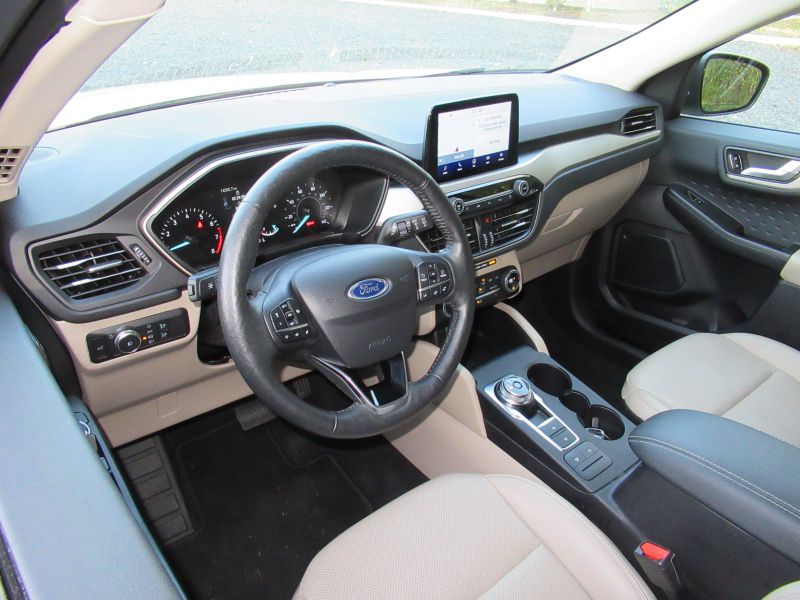
Photo by Brady Holt
Final Thoughts
Your winner of this comparison comes down largely to your personal priorities. Are you looking for the compact SUV with the roomier, better-finished interior and pretty good driving dynamics? Or are you looking for the compact SUV with sharper handling and a choice of max-performance or max-efficiency powertrains, along with pretty good interior space?
To us, the former seems like the better fit for many buyers. The Rogue may not be as sporty as the Escape — especially when optioned with its optional turbocharged four-cylinder engine — but since the redesigned model is quicker and more agile than before, we think it will keep most folks satisfied. And you’ll appreciate the Nissan’s extra space when it’s time to load it up with people or luggage. If you prioritize quicker acceleration and more agile handling, or if you’d pay extra to get the extra-thrifty Escape Hybrid, then the Ford will suit you better. But all things considered, we’ve picked the pleasant, practical, well-rounded Nissan Rogue.
Nissan Rogue
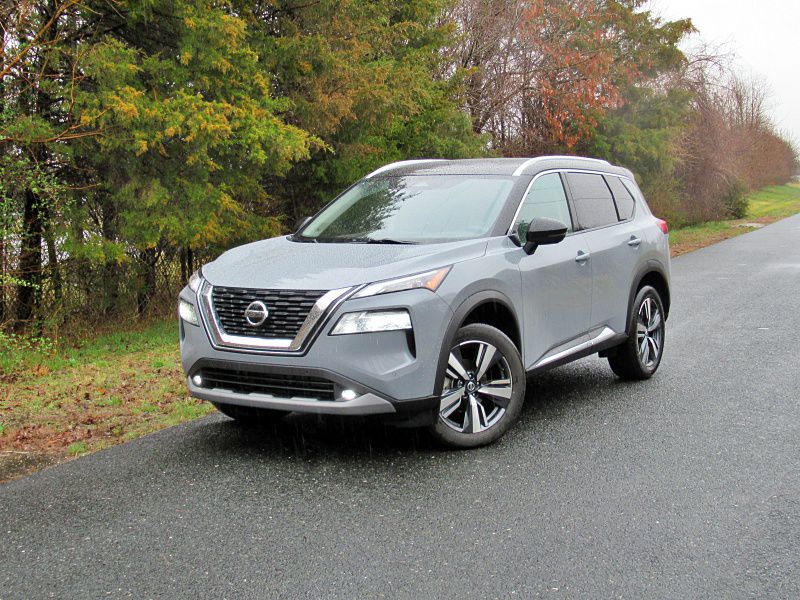
Photo by Brady Holt